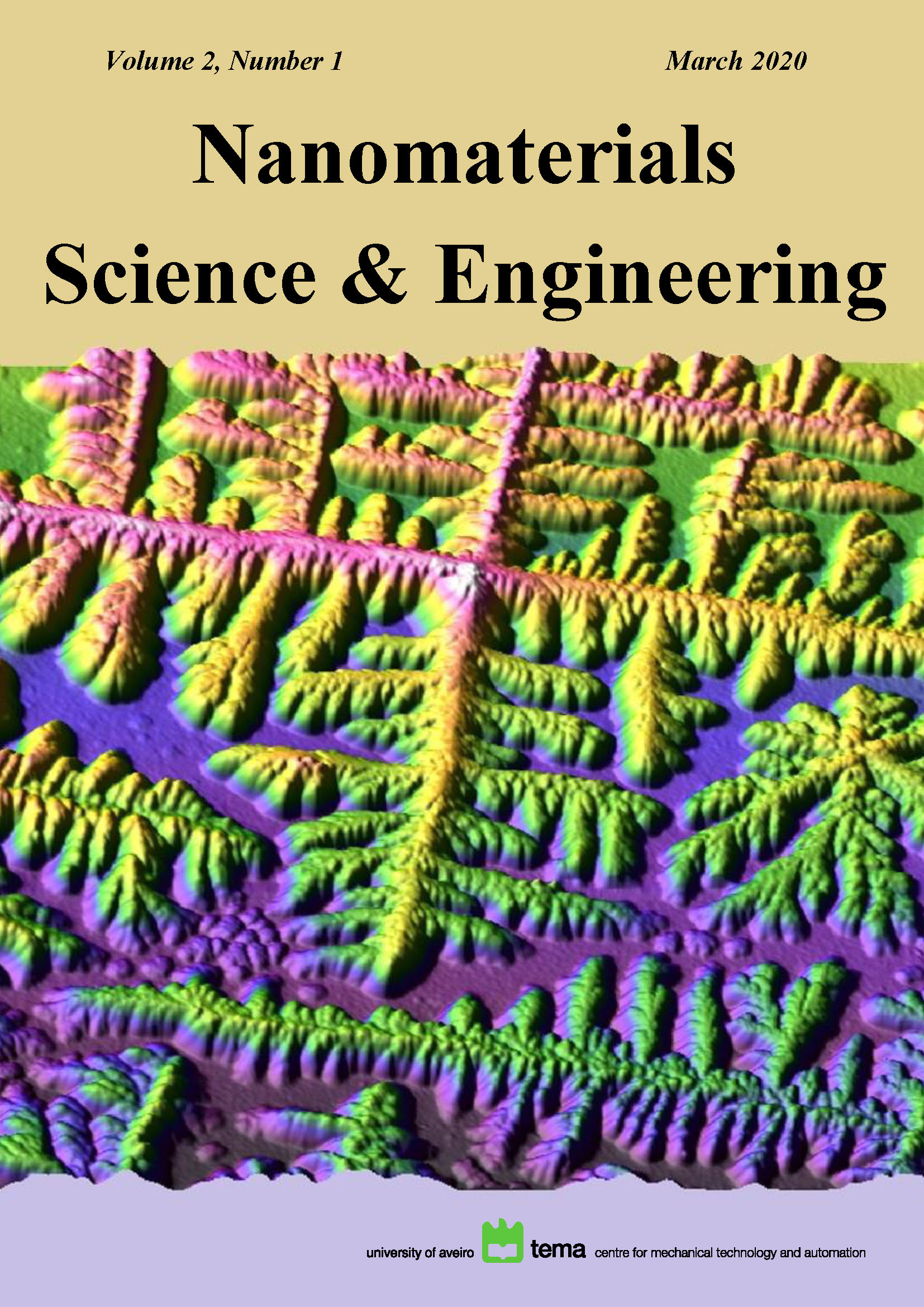Mechanical and Solvent Transport Characteristics of Nitro and n-Butylphenyl Supported Poly(1,3,4-Oxadiazole)s
Abstract
Examination of mechanical and solvent transport properties of π-conjugated polymers (PCPs), viz;poly(2-nitro-p-phenylene-1,3,4-oxadiazole) [PNPO], poly(p-phenylenevinylene-1,3,4-oxadiazole) [PPVO], poly(p-(nitrophenylene)vinylene-1,3,4-oxadiazole) [PNPVO], poly[(2-N,Nʹ-dibutylaminophenyl)1,3,4-oxadiazole] [PNAPO], poly[pyridine(2-nitrophenyl)-1,3,4-oxadiazole] [PPNO] and poly[2-(o-nitrophenyl)-5-phenyl-1,3,4-oxadiazole] [PNPPO] has been done in flexible film form after blending them with poly(methylmethacrylate) or polystyrene. All six PCPs, in blended form, showed good mechanical properties with tensile strength in the range of 11.45 MPa - 22.89 MPa. Loading of TiO2 nanoparticles onto selected polymer matrices has been found to contribute to a quantum enhancement in tensile properties. Solvent transport studies of blended polymer films and selected TiO2 loaded matrices were carried out. Surfaces of films have been found to be predominantly hydrophobic ensuring a long service life for the appliances derived from them in moisture rich ambience.
Copyright (c) 2020 Nanomaterials Science & Engineering

This work is licensed under a Creative Commons Attribution-NonCommercial 4.0 International License.
Copyright Information
Authors who publish in the Nanomaterials Science & Engineering agree to the following terms:
- Authors retain copyright and grant the journal right of first publication with the work simultaneously licensed under a Creative Commons Attribution License that allows others to share the work with an acknowledgement of the work's authorship and initial publication in this journal.
- Authors are able to enter into separate, additional contractual arrangements for the non-exclusive distribution of the journal's published version of the work (e.g., post it to an institutional repository or publish it in a book), with an acknowledgement of its initial publication in this journal.
- Authors are permitted and encouraged to post their work online (e.g., in institutional repositories or on their website) after publication, as it can lead to productive exchanges, as well as earlier and greater citation of published work.
Copyrights to illustrations published in the journal remain with their current copyright holders.
It is the author's responsibility to obtain permission to quote from copyright sources.
Any fees required to obtain illustrations or to secure copyright permissions are the responsibility of authors.





